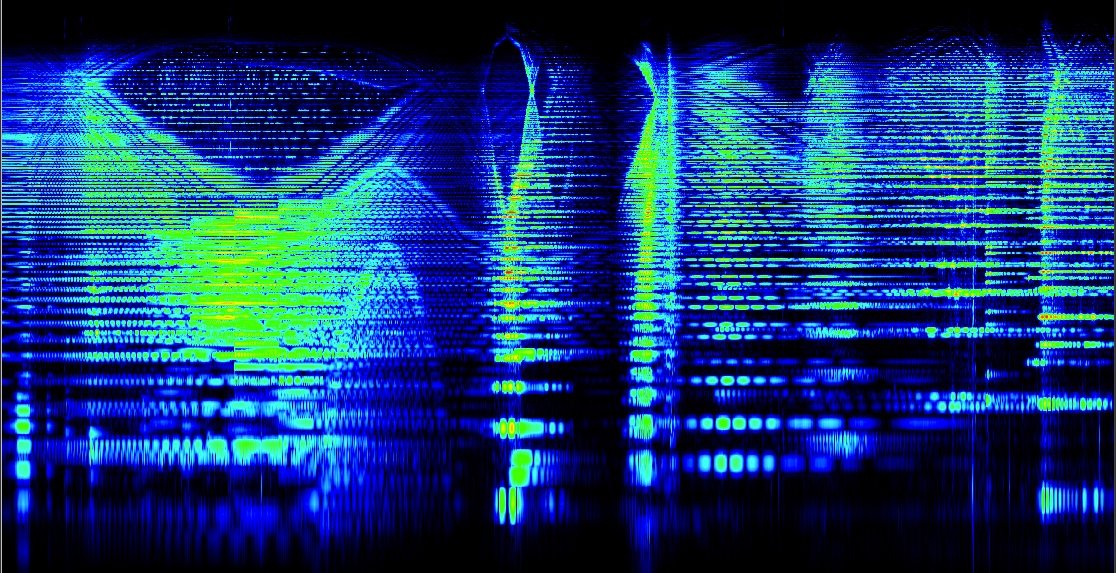SONIC LANDSCAPE NO. 3 (1975)
for four computer-synthesized soundtracks
Sonic Landscape No. 3 is a timbral, spatial study. It is intended to create a sound environment that surrounds the listener, and envelopes him/her in an acoustic space of changing dimensions. A sense of travelling through various spaces may be experienced.The work may be arbitrarily divided into three sections, each of which organizes the timbral and textural component in different ways. Familiar percussion timbres occur in the first section, which suggest familiar associations and images. In the second section, less familiar timbres are introduced in heavier densities such that the interaction of entire groups of timbres and events are perceived. In the final section, individual events are not perceived as much as a single, complex texture composed of related broad-band elements. The resultant complex of sound tends to be heard and felt as a physical sound mass; sound and sense seem inextricably fused.
Sonic Landscape No. 3 was awarded 1st prize in the Computer Music category of the 5th International Competition of Electroacoustic Music in Bourges, France, in 1977.
Sonic Landscape No. 3 is available on the Melbourne album Sonic Landscapes and Cultures Electroniques 11, serie IMEB/UNESCO/CIME, France.
Spectrogram of a section of Sonic Landscape No. 3
Reference:Martijn Voorvelt, "The Environmental Element in Barry Truax's Compositions," Journal of New Music Research, 26, 1997, pp. 48-69.
Production Note:
The work was realized with the composer's POD programs for computer sound synthesis and composition at Simon Fraser University. The synthesis method is that of Chowning's frequency modulation timbral synthesis. The programs run on a Hewlett-Packard 2116 minicomputer with 12-bit D/A converter and digital magnetic tape unit.
The sound structures are initially composed interactively with the POD6 program that utilizes real-time monophonic synthesis. The compositional model involves the selection of sound objects to be distributed in a random, Poisson-determined frequency/time field whose density and frequency range are variable in time. For each structure, two or four random variants are calculated and stored; each later occupies a different track on magnetic tape.
Most of the sound structures used in the composition are synthesized with the POD7 program for non-realtime synthesis at fixed sampling rate. Envelopes are allowed to overlap in this version, creating a multiphonic texture. The possibility of digital reverberation allowed by this program is not utilized in this particular composition.
Four-channel mixing of the resultant tapes arrives at the final composition. The work, originally realized in 1975, was revised and largely re-synthesized in early 1977 at Simon Fraser University, and mixed in the Sonic Research Studio of the Department of Communication.
